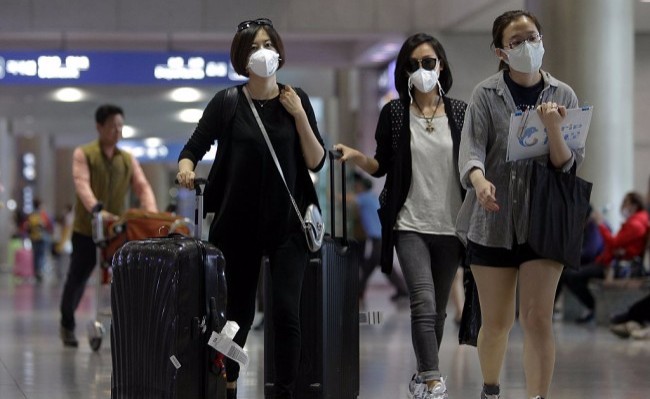
Uproxx knows that science, technology, engineering, and math (STEM) disciplines are driving the future of this planet forward. Every day, we see new ideas, fresh innovations, and bold trailblazers in these fields. Follow us this month as we highlight how STEM is shaping the culture of NOW.
Pretty much every movie about a viral outbreak has this scene: A group of unknowing passengers board an airplane, and everything looks normal except…one of them is sick. The camera shows us this random man in a suit sneezing and sweating. He has something that looks harmless to the rest of the passengers and crew. A flu, maybe. But as the audience, we know better. We pan the airplane to see all of the unlucky people, going about their lives, unaware that this is their last day on Earth. Because by the time the sequence is over the man in the suit has collapsed, with blood oozing out of his nose and eyes. Extreme close up of the air filters, sucking up this airborne virus from the back row and spitting it out in the pilot’s cabin. The plane is doomed.
The reason that this is such a common horror movie moment is that it taps into our collective fear of the airflow on airplanes. We’re trapped in the sky with every pathogen that the other passengers have brought on — just circulating and re-circulating through a small, enclosed space. It’s enough to make your skin crawl. With every outbreak of a worldwide disease, you’ll see people traveling with face masks and hand sanitizer, desperately trying to ward off the invisible germs cycling all around them. It’s terrifying.
Raymond Wang was just a teenager when the world was in the throes of panic over H1N1, but he became interested by the problem of pathogens circulating in air cabins. This curiosity continued to grow after the 2014 Ebola outbreak. So the innovative high schooler decided to tackle the problem. He began doing research into the airflow of pathogens on planes, and his findings were alarming.
He used fluid dynamics to create simulations of how air flows on the crafts and found that the way airflow is currently directed actually helps pathogens spread further and faster. He also discovered that there seemed was very little research being done to combat the issue.
“Given how problematic these things are, it’s actually surprising how understudied they are,” Wang says. “A lot of the fund-backed efforts are dedicated to making sure the airplane flies. But it leaves the aircraft cabin passenger comfort, passenger health, lower on the priority list.”
Wang’s research led him to look for creative, affordable ways to minimize the sharing of air flow on flights. In doing so, he came up with a surprisingly simple solution: He invented a small, fin shaped device that he calls his patented air inlet system. The piece of plastic fits into the airplane’s existing air slots. Then the air inlet system increases fresh airflow and redirects pathogens out of circulation.
“We get every passenger fresh air, and numerically that comes out to about a 55 times decrease in pathogen transmission between passengers,” Wang explained.
The product was easy, cheap, and overwhelmingly effective. In 2015, the world noticed. At only 17, Wang won the top prize at the 2015 Intel Science and Engineering Fair for his air inlet system, winning $75,000 and huge accolades. He was also named one of Canada’s “Top 20 Under 20.”
Now finishing up his freshman year at Harvard, Wang is working though the lengthy process to bring his product into aircrafts. It hasn’t been easy. The Aerospace industry is heavily regulated. Currently, he’s finishing up the patenting process while, at the same time, working directly with aircraft manufacturers (as well as third party manufacturers that deal with aircraft cabins). The hope is to get the certificates to pass FCC regulations soon. When that happens, Wang can begin testing the air inlet system out in planes.
It’s a lot of work getting a product from the idea phase to final product. But even with his strenuous school schedule, Wang doesn’t shy away from the effort.
“I think the whole process of doing research does build a lot of character, let’s put it at that,” he says with a laugh. “The biggest breakthroughs come at the intersection of being able to apply scientific engineering know-how with a solid understanding of business. That’s where you’re able to create things that are not only effective but are also economically feasible to implement and really implementable in the world.”
The air inlet system is only the latest of many inventions that Wang has dreamed up since 7th grade. Whether he was converting falling rain into electricity, making better knee braces, or studying the effect of sanitation on the ozone, he’s always been passionate about finding solutions to problems. Wang wants to make a difference, and he can’t see that drive changing anytime in the future. He simply loves being at the forefront of innovation and being part of the solutions to problems we face as a society.
“I just want to contribute and make people’s lives easier every day,” he says. “I think what really motivates me is being able to look at a problem, and trying to come up with a solution to it that’s not only cool and effective but also economically feasible to implement.”






